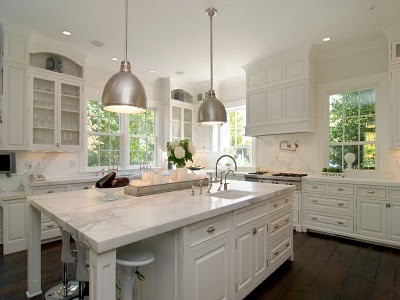Essential Elements to Take Into Consideration When Selecting Legs For Kitchen Area Island
Picking the ideal legs for a kitchen area island includes a cautious analysis of multiple factors that can significantly influence both capability and visual charm. As we check out these elements, it becomes clear that each decision can have significant effects for the total kitchen experience.
Material Options
When choosing legs for a kitchen island, understanding the numerous material choices is necessary for attaining both visual appeal and architectural honesty (Legs For Kitchen Island). The choice of product significantly affects not only the durability of the island however likewise its general design and performance
Metal legs, typically made from stainless steel or wrought iron, contribute a commercial and modern feeling while making sure toughness and security. These materials are resistant to use and can support substantial weight, making them perfect for bigger islands.
One more alternative is engineered materials, like MDF or plywood, which can be more affordable while still offering a series of coatings. They might not give the very same level of stability as solid wood or steel. Legs For Kitchen Island. Lastly, products such as acrylic or glass can create a modern appearance, though they might need extra support to ensure security.
Inevitably, the option of product for kitchen area island legs must straighten with the desired capability and the general style of the kitchen.
Design And Style

When considering style, the shape and finish of the legs are crucial. Tapered legs can give a feeling of agility and beauty, while thicker, more robust legs can share toughness and security. In addition, the surface-- be it repainted, discolored, or all-natural-- must enhance the cabinets and kitchen counter products to create a unified look.
Additionally, the design of the legs can also reflect personal taste. Customized or attractive legs, such as those featuring detailed carvings or unique geometric forms, can work as centerpieces, including character and personality to the kitchen area. Ultimately, the ideal choice will not only enhance performance but likewise boost the aesthetic charm, making the kitchen island a standout feature of the home.
Elevation Considerations
Selecting the suitable height for kitchen island legs is essential, as it straight affects both performance and comfort. The basic height for a kitchen area island commonly ranges from 36 to 42 inches, lining up with typical kitchen counter heights.

It is additionally vital to account for customers' heights and choices. Customizing the elevation can ensure a comfortable experience for all member of the family, making the kitchen island an extra satisfying and practical space.
Weight Assistance
Making certain ample weight support for kitchen area island legs is vital for both safety and security and performance. The cooking area island frequently serves numerous functions, including cooking, eating, and additional storage, requiring a durable support framework. When choosing legs, it is important to take into consideration the total weight capacity called for based on the island's meant usage and the products that will certainly be put on it.
The selection of product for the legs plays a substantial duty in their weight-bearing abilities. Solid wood, metal, and heavy-duty compounds normally provide exceptional toughness compared to lighter materials. In addition, the design of the legs-- whether they are straight, tapered, or have a pedestal form-- can affect their capacity to distribute weight properly across the structure.
Furthermore, the leg positioning need to be tactically prepared to improve stability. Legs positioned at the edges or with a larger base can much visit our website better sustain larger tons. Constantly get in touch with the maker's specifications concerning load limits to make certain that the legs can maintain the designated weight without compromising safety and security. In recap, selecting cooking area island legs with appropriate weight assistance is crucial for creating a safe and practical cooking area.
Installment and Upkeep
Correct setup and maintenance of kitchen island legs are important for making sure durability and stability. To begin, it is important to adhere to the maker's standards throughout installation. This usually involves securing the legs to the space station making use of ideal bolts, making certain that the legs are level and aligned. Utilizing a degree tool can assist avoid wobbling and enhance the overall aesthetic allure of the kitchen area island.
Once installed, routine maintenance is necessary to maintain the stability and appearance of the legs - Legs For Kitchen Island. For wooden legs, routine cleansing with a moist fabric and application of ideal timber polish can protect against dampness damages and preserve their coating. Steel legs might require a gentle cleaning option to eliminate grease and grime, complied with by a completely dry cloth to protect against rust development
Additionally, examine the legs consistently for signs of wear or damage, such as fractures or loosened joints. Tightening screws or screws as needed can likewise prolong the lifespan of the legs. By adhering to these setup and maintenance techniques, homeowners can guarantee that their cooking area island stays strong and aesthetically appealing for many years to come.
Verdict

Aesthetic comprehensibility is vital in selecting the design and design of legs for a kitchen island, as these components substantially affect the general atmosphere of the room. Conical legs can offer a feeling of lightness and sophistication, while thicker, much YOURURL.com more durable legs can convey strength and stability.Choosing the ideal height for kitchen area island legs is crucial, as it directly impacts both functionality and convenience. In summary, choosing kitchen island legs with ample weight view it now support is essential for producing a useful and secure cooking room.
In conclusion, choosing legs for a kitchen island demands cautious consideration of different factors, including product options, style, height, weight assistance, and setup.
Comments on “Include Security and Elegance with Tough Legs For Kitchen Island Installations”